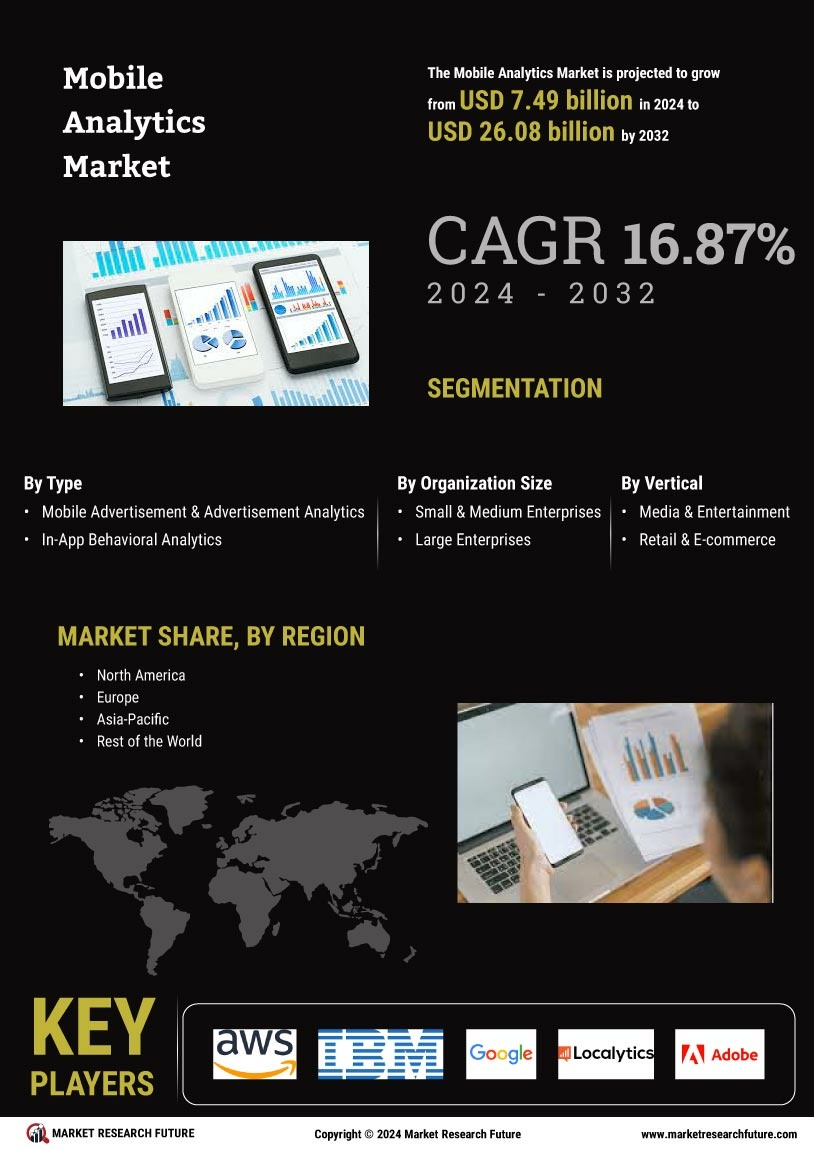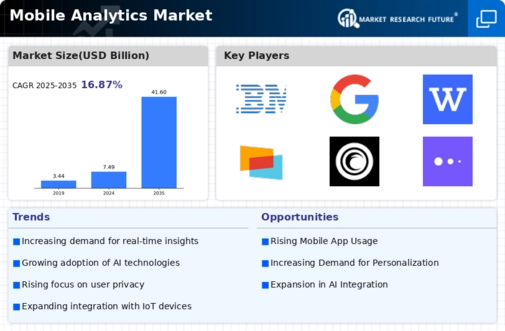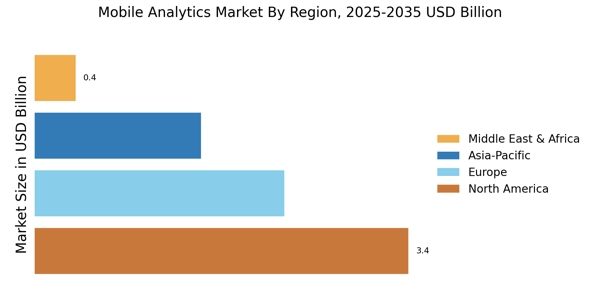Rising Demand for Mobile Applications
The Mobile Analytics Market is experiencing a surge in demand for mobile applications across various sectors, including retail, finance, and healthcare. As businesses increasingly recognize the importance of mobile platforms for customer engagement, the need for analytics tools to track user behavior and app performance becomes paramount. According to recent data, the number of mobile app downloads is projected to reach 258 billion by 2025, indicating a robust growth trajectory. This trend compels organizations to invest in mobile analytics solutions to gain insights into user preferences and optimize their applications accordingly. Consequently, the Mobile Analytics Market is likely to expand as companies seek to leverage data-driven strategies to enhance user experience and drive revenue.
Emergence of IoT and Connected Devices
The Mobile Analytics Market is significantly influenced by the emergence of the Internet of Things (IoT) and connected devices. As more devices become interconnected, the volume of data generated is expected to increase exponentially. This proliferation of data presents both challenges and opportunities for businesses seeking to analyze user interactions across multiple platforms. The integration of mobile analytics with IoT data can provide organizations with a holistic view of customer behavior, enabling them to make informed decisions. Market forecasts suggest that the number of connected devices will surpass 75 billion by 2025, indicating a substantial growth potential for the Mobile Analytics Market as companies seek to capitalize on the insights derived from this data.
Integration of Advanced Analytics Tools
The Mobile Analytics Market is witnessing a notable integration of advanced analytics tools, such as predictive analytics and big data technologies. These tools enable businesses to analyze vast amounts of data generated by mobile applications, providing deeper insights into user behavior and market trends. The increasing complexity of consumer interactions necessitates sophisticated analytics solutions that can process and interpret data in real-time. As organizations strive to remain competitive, the adoption of these advanced tools is expected to grow. Market data suggests that The Mobile Analytics Market is anticipated to reach USD 684 billion by 2030, further underscoring the potential for growth within the Mobile Analytics Market as companies seek to harness the power of data.
Growing Importance of Customer Experience
In the Mobile Analytics Market, the growing emphasis on customer experience is driving the demand for analytics solutions. Businesses are increasingly aware that understanding customer preferences and behaviors is crucial for retaining clients and fostering loyalty. As a result, organizations are investing in mobile analytics to gather insights that inform product development and marketing strategies. Data indicates that companies prioritizing customer experience are likely to achieve higher revenue growth, with a potential increase of up to 10-15%. This trend highlights the necessity for businesses to adopt mobile analytics tools that facilitate a comprehensive understanding of customer journeys, thereby enhancing the overall user experience and contributing to the Mobile Analytics Market's expansion.
Regulatory Compliance and Data Governance
The Mobile Analytics Market is increasingly shaped by the need for regulatory compliance and data governance. As data privacy regulations become more stringent, organizations are compelled to adopt analytics solutions that ensure compliance with legal standards. This trend is particularly relevant in sectors such as finance and healthcare, where data security is paramount. Companies are investing in mobile analytics tools that not only provide insights but also adhere to regulatory requirements. The market for data governance solutions is projected to grow significantly, with estimates suggesting a value of USD 2.5 billion by 2026. This focus on compliance and governance is likely to drive innovation within the Mobile Analytics Market, as businesses seek to balance data utilization with regulatory obligations.


















Leave a Comment